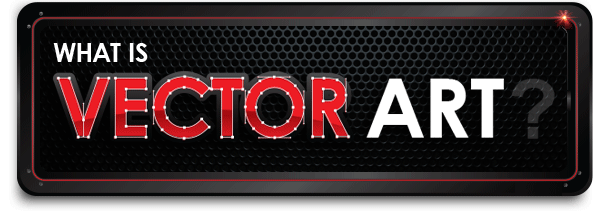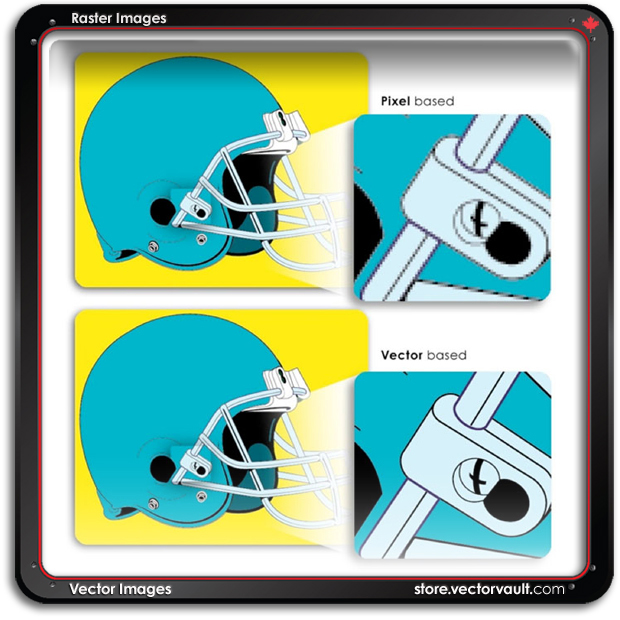
Vector artwork is a term that describes any art made with vector illustration software like Adobe Illustrator. Vector artwork is built from vector graphics, which are images created with mathematical formulas. In comparison, raster art (also referred to as bitmaps or raster images) is created with colorized pixels.

In graphic design, there are two main industry-standard file formats:
Pixel based
and
Vector based.

VECTOR BASED GRAPHICS
Vectors are mathematical. They are an assembly of points, angles, colour values and shapes that can be adapted easily and enlarged without loosing resolution. That’s why logos are built in vector art. A logo looks as crisp on a billboard as it does on a business card. File sizes are small and work perfectly with Adobe Illustrator, Photoshop and other industry-standard applications from software brands like Corel.

PIXEL BASED GRAPHICS
(or raster based as it is sometimes refered to) are images that are made up of pixels. File sizes can be very large and are dependent on dpi (dots per inch) for clarity. When you enlarge a small raster image it immediately begins to degrade and look “pixelated”. This makes this format somewhat limiting. In order to work in large scale formats, you need high resolution photography. If you don’t have access to a high res version you may be forced to reshoot or you may be out of luck. Vector Art does not have this limitation.


WHO USES VECTOR ART?
Vector art is used by a wide variety of creatives around the world every day. Illustrators, animators, textile producers, art directors, game designers and web developers know their value. The flexible nature of this file format makes it a favourite among many industry professionals. Design schools already prepare their students with the knowledge to handle vector art. Whether you have your sights set on directing a project or you are the person pushing the keys, it’s important to have some basic understanding of how they work and what they can do for you.
Read more about these amazing individuals and how they have used vector art to their advantage.
WHY USE VECTORS?
Vectors are easy to adapt. By simply rearranging points and adjusting angles, new ideas can be formed easily. This allows experimentation to shape projects more freely (something that raster-based graphics lack). Vector art brings out the artist in the designer. Yet it’s precision keeps it grounded. It’s the best of both worlds. Manageable file sizes are also a big advantage. When it comes to moving files from one application to the next it’s also nice to know that no matter what language you speak, or what platform you speak it in – Vector Art translates across the board.
VECTOR BASED APPLICATIONS
Vector art can be edited in most of the Adobe Creative Suite Applications. Importing and exporting between them is seamless. Because many new applications on the market today are smaller and require even more image processing power, vectors are in high demand. As new apps hit the market each day, it’s fair to say that vector based graphics will be powering much of that technology. Learn more about vector art and how you can advantage from it.


WHERE DO I FIND VECTOR ART?
Right here. It all starts with a search. We’ll take it from there.


